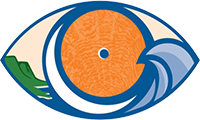Put Hami
About Us
About Us
Guinaha
Resources
Listan PalåbraResources
Word Lists Nå’an Lugǻt
Guam Place Names Rinikohen Tiningo’ Put CHamoru
CHamoru Archives
Sagan Inilao Put Hinayi Yan Rikuetdon CHamoru
Genealogy Research Lab and Resources
Genealogy Research Lab and Resources
Setbisiu Para I Kumunidǻt
Community Services
Håfa GuåguahaCommunity Services
Current Events Aligao Ham
Contact Us
back
Hinenggen-Måmi
Our Philosophy
Membro Siha
Our Philosophy
Board Members Emplehao Siha
Employees
Mangga’chong Siha
Partnerships
I Seyon-Måmi
Partnerships
Our Logo Måpan Otganisasión
Organizational Chart Akton Irensian CHamoru 2016
CHamoru Heritage Act 2016
back
Sagan Inilao Put Hinayi Yan Rikuetdon CHamoru
Genealogy Research Lab and Resources Rinikohen Matiriåt Put Hinayi
Genealogy Resources
back
Pinila’
Translations
Faneyåkan put i Utugrafihan CHamoru, Guåhan
Training on Guam CHamoru Orthography
Seyon Inafitma
Training on Guam CHamoru Orthography
Seal of Affirmation
Rikuetdon Finayen Tinemtom yan Setbisiu
Lifetime Achievement Awards
Lifetime Achievement Awards
back
Aligao HamContact Us
back
ATURIDǺT NUMA'LON YAN INADILÅNTON HAGÅTÑA
Hagåtña Restoration and Redevelopment Authority (HRRA)
Bernice P. Bishop Museum
Hagåtña Restoration and Redevelopment Authority (HRRA)
Dibisión Inestudion CHamoru yan Espesiǻt na Progråma Siha
CHamoru Studies and Special Projects Division, Department of Education Dinanña’ Mamfáfa’na’gue
CHamoru Medium Education Consortium Dipåttamenton Kåohao Guinahan CHamoru yan i Inangokkon Inadahen Guåhan
Department of CHamoru Affairs and Guam Museum Eskuelan Maga’låhen Hurao
Maga’låhen Hurao CHamoru Academy Charter School Eskuelan San Francisco
St. Francis Catholic School GIHA
Guam Indigenous Heritage Alliance Aturidǻt Numa’lon yan Inadilånton Hagåtña
Hagåtña Restoration and Redevelopment Authority (HRRA) Håle’ Taotao Håya
CHamoru Roots Ináfa’maolek Ginen i Sengsong
Guam Mayors Council Ináfa’maolek yan i Mañe’lu-ta
Chamorro-Carolinian Language Policy Commission Inayudan i Manhoben
Summer Program Interns Kulehon Kumunidǻt Guåhan
Guam Community College Setbisión Bisitan Guåhan
Guam Visitors Bureau Umeyak CHamoru
LearingCHamoru.com Unibetsidǻt Guåhan
University of Guam US Geological Survey
Guam Hydrologic Survey
back
Finatta Siha
Exhibits and Multimedia Products
Exhibits and Multimedia Products
Lepblo Siha
Publications
Publications
Materiǻt Ineyak Siha
Learning Tools
Learning Tools
Ripót Kada Såkkan
Annual Reports
Annual Reports
Tanchu'an i Manaotao Tåno'
Symbols of Nationhood
Symbols of Nationhood
I Banderan Yan Seyon Guåhan
Guam Flag and Seal
The Guam flag is a universal symbol of pride and honor for the people of Guam. The seal emblazoned at the center of the flag is believed to have been inspired by the artwork of a CHamoru artist, Mr. Francisco Feja, in 1917. Mr. Feja was recognized by Legislative Resolution as having memorialized the iconic Guam scene of the Hagåtña River as it empties into the sea, the surrounding beach with a lone coconut tree and a proa in the horizon which he depicted as the seal in the shape of a slingstone. All the symbols in the seal are meaningful cultural representations of the prowess of the Taotao Tåno’ and life in our beautiful island homeland. The colors in the seal and flag feature the vibrant hues in Guam’s natural environment.
Prior to 1917, the colonial flags of Spain and later the United States were singularly flown over Guam from 1565 until 1917 when the Guam seal and flag were accepted by the Naval government, which formally adopted them in 1930. Following the enactment of the 1950 Organic Act of Guam by the U.S. Congress, the Guam Congress passed Public Order No. 33 designating the 1917 design as the official territorial seal, which was approved by the military postwar Governor, Admiral Pownall.
The Lieutenant Governor of Guam is the official keeper of the seal. The Guam Flag, bearing the Official Seal, is recognized and flown throughout the world and at the United Nations and the U.S. Capital as our national symbol.
